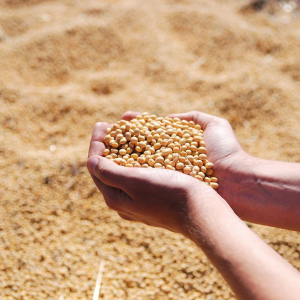
Agricultural and forestry products that are traded internationally use around 22% of global agricultural land and account for 27% of global land-use emissions, according to this paper. Land-use emissions include those from both land use change, such as deforestation, and agricultural processes, such as from livestock’s digestive systems. Animal products account for the majority of land use but only 14 to 19% of net embodied emissions. One of the major trends observed between 2004 and 2017 was a decrease in Brazilian export to Europe and the US coinciding with an increase in Brazilian exports to China.
The image below summarises trends over time.
Image: Figure 1, Hong et al. Agricultural products, land use, and land-use emissions embodied in international trade. The red dashed lines correspond to the right-hand axis, which shows what share of total agricultural value, land use, and emissions are embodied in trade.
The next figure shows the balance of emissions from exported goods (on the left) and imported goods (on the right) for selected countries.
Image: Figure 5, Hong et al. Balance of land-use emissions embodied in imports and exports of major traders. Trade balance in (A) 2017 and (B) 2004. The net embodied emissions are indicated by dots.
Abstract
International trade separates consumption of goods from related environmental impacts, including greenhouse gas emissions from agriculture and land-use change (together referred to as “land-use emissions”). Through use of new emissions estimates and a multiregional input-output model, we evaluated land-use emissions embodied in global trade from 2004 to 2017. Annually, 27% of land-use emissions and 22% of agricultural land are related to agricultural products ultimately consumed in a different region from where they were produced. Roughly three-quarters of embodied emissions are from land-use change, with the largest transfers from lower-income countries such as Brazil, Indonesia, and Argentina to more industrialized regions such as Europe, the United States, and China. Mitigation of global land-use emissions and sustainable development may thus depend on improving the transparency of supply chains.
Reference
Hong, C., Zhao, H., Qin, Y., Burney, J.A., Pongratz, J., Hartung, K., Liu, Y., Moore, F.C., Jackson, R.B., Zhang, Q. and Davis, S.J., 2022. Land-use emissions embodied in international trade. Science, 376(6593), pp.597-603.
Read the full paper here. See also the TABLE explainer What is land use and land use change?












Post a new comment »